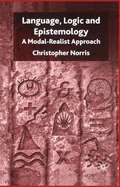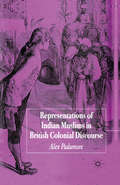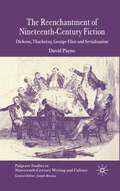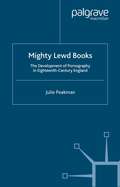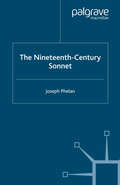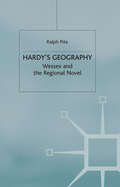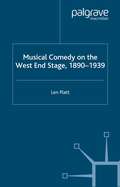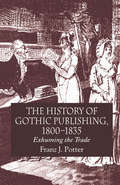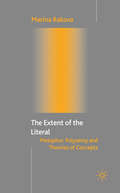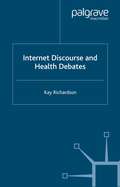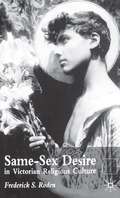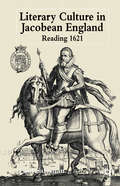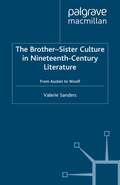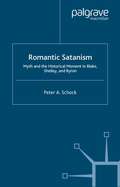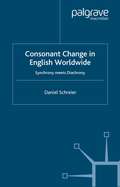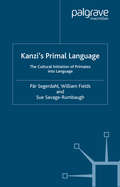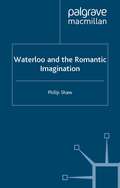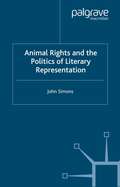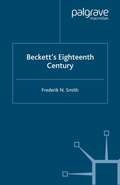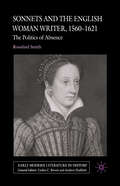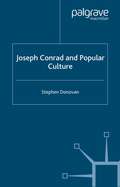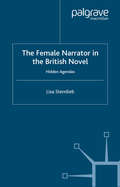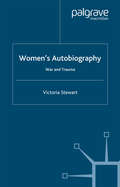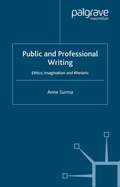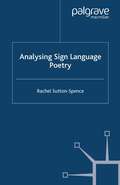- Table View
- List View
Language, Logic and Epistemology: A Modal-Realist Approach
by C. NorrisNorris presents a series of closely linked chapters on recent developments in epistemology, philosophy of language, cognitive science, literary theory, musicology and other related fields. While to this extent adopting an interdisciplinary approach, Norris also very forcefully challenges the view that the academic 'disciplines' as we know them are so many artificial constructs of recent date and with no further role than to prop up existing divisions of intellectual labour. He makes his case through some exceptionally acute revisionist readings of diverse thinkers such as Derrida, Paul de Man, Wittgenstein, Chomsky, Michael Dummett and John McDowell. In each instance Norris stresses the value of bringing various trans-disciplinary perspectives to bear while none-the-less maintaining adequate standards of area-specific relevance and method. Most importantly he asserts the central role of recent developments in cognitive science as pointing a way beyond certain otherwise intractable problems in philosophy of mind and language.
Representations of Indian Muslims in British Colonial Discourse
by A. PadamseeThis study questions current views that Muslims represented a secure point of reference for the British understanding of colonial Indian society. Through revisionary readings of a wide range of texts, it re-examines the basis of the British misperception of Muslim 'conspiracy' during the 'Mutiny'. Arguing that this belief stemmed from conflicts inherent to the secular ideology of the colonial state, it shows how in the ensuing years it produced representations ridden with paradox and requiring a form of descriptive segregation.
The Reenchantment of Nineteenth-Century Fiction: Dickens, Thackeray, George Eliot and Serialization (Palgrave Studies in Nineteenth-Century Writing and Culture)
by D. PayneAn ambitious weave of ideological, literary, and commodity history, The Reenchantment of Nineteenth-Century Fiction shows how Dickens, Thackeray, and George Eliot sacralized Victorian modernity in two contradictory ways: by incarnating their moment as one of transcendent development, and by reenacting bloody rituals from a fading Protestant past. Both the magnitude and the brevity of their success make these works exemplary for our own era, caught between the archaic gods of traditional religion and the still-mysterious ones of market society.
Mighty Lewd Books: The Development of Pornography in Eighteenth-Century England
by J. PeakmanMighty Lewd Books describes the emergence of a new home-grown English pornography. Through the examination of over 500 pieces of British erotica, this book looks at sex as seen in erotic culture, religion and medicine throughout the long eighteenth-century, and provides a radical new approach to the study of sexuality.
The Nineteenth-Century Sonnet
by J. PhelanWhat was the appeal of 'the Sonnet's scanty plot of ground' to Romantic and Victorian poets? How did a form which had fallen into disuse in the early eighteenth-century become a central and enduring part of nineteenth-century poetry? This study traces the history and development of the sonnet throughout the nineteenth-century, examining the work of Wordsworth, Keats, Elizabeth Barrett Browning, Christina Rossetti, George Meredith and a number of other key canonical and non-canonical writers.
Hardy's Geography: Wessex and the Regional Novel
by R. PiteHardy's Geography reconsiders a familiar element in Hardy's novels: their use of place and, specifically, of Dorset. Hardy said his Wessex was a 'partly real, partly dream-country'. This study examines how reality and dream interact in his work. Should we look for a real place corresponding to Casterbridge? What is the relation between one person's feelings for a place and society's view of it. Pite concludes that Hardy addresses these issues through a distinctive regional awareness.
Musical Comedy on the West End Stage, 1890 - 1939
by L. PlattThis book offers the first full historical treatment of a music theatre that was once at the centre of London's West End. From the late Victorian period to the early 1920s, musical comedy was the single most popular form of 'legitimate' theatre entertainment. This lively account establishes musical comedy as one of the first industrial cultures and offers fascinating insights into how it functioned ideologically as a celebrated embracing of the modern condition.
The History of Gothic Publishing, 1800-1835: Exhuming the Trade
by F. PotterTo better understand and contextualise the twilight of the Gothic genre during the 1920s and 1830s, The History of Gothic Publishing, 1800-1835: Exhuming the Trade examines the disreputable aspects of the Gothic trade from its horrid bluebooks to the desperate hack writers who created the short tales of terror. From the Gothic publishers to the circulating libraries, this study explores the conflict between the canon and the twilight, and between the disreputable and the moral.
The Extent of the Literal: Metaphor, Polysemy and Theories of Concepts
by M. RakovaThe Extent of the Literal develops a strikingly new approach to metaphor and polysemy in their relation to the conceptual structure. In a straightforward narrative style, the author argues for a reconsideration of standard assumptions concerning the notion of literal meaning and its relation to conceptual structure. She draws on neurophysiological and psychological experimental data in support of a view in which polysemy belongs to the level of words but not to the level of concepts, and thus challenges some seminal work on metaphor and polysemy within cognitive linguistics, lexical semantics and analytical philosophy.
Internet Discourse and Health Debates
by K. RichardsonApplying multimodal textual analysis to the languages and images of on-line communication forms, Kay Richardson shows, from an applied linguistic perspective, how the Internet is being used for global, interactive communication about public health risks. Detailed case studies of the possible risks posed by SARS, by mobile phones and by the vaccination of babies against childhood diseases are situated within the context of research on computer-mediated communication, as well as within the broader social context of globalization and discourses of risk and trust.
Same-Sex Desire in Victorian Religious Culture
by F. RodenSame-Sex Desire in Victorian Religious Culture examines the role of Christian history in nineteenth-century definitions of homosexual identity. Roden charts the emergence of the modern homosexual in relation to religious, not exclusively sociological discourses. Positing Catholicism as complementary to classical Greece, he challenges the separatism of sexuality and religion in critical practice. Moving from Newman and Rossetti, to Hopkins, Wilde, and Michael Field amongst others, Same-Sex Desire claims a new literary history, bringing together gay studies and theology in Victorian literature.
Literary Culture in Jacobean England: Reading 1621
by P. SalzmanThis book offers an unparalleled depth of historical research by surveying the extraordinary richness of literary culture in a single year. Paul Salzman examines what is written, published, performed and, in some cases, even spoken during 1621 in Britain. Well-known works by writers such as Donne, Burton, Middleton, and Ralegh, are examined alongside hitherto unknown works in a huge variety of genres: plays, poems, romances, advice books, sermons, histories, parliamentary speeches, royal proclamations. This is a work of literary history that greatly enhances knowledge of what it was like to read, write and listen in early modern Britain.
The Brother-Sister Culture in Nineteenth-Century Literature: From Austen to Woolf
by V. SandersThis book argues that brother-sister relationships, idealized by the Romantics, intensified in nineteenth-century English domestic culture, and is a neglected key to understanding Victorian gender relations. Attracted by the apparent purity of the sibling bond, novelists and poets also acknowledged its innate ambivalence and instability, through conflicting patterns of sublimated devotion, revenge fantasy, and corrosive obsession. The final chapter shows how the brother-sister bond was permanently changed by the experience of the First World War.
Romantic Satanism: Myth and the Historical Moment in Blake, Shelley and Byron
by P. SchockCriticism has largely emphasised the private meaning of 'Romantic Satanism', treating it as the celebration of subjectivity through allusions to Paradise Lost that voice Satan's solitary defiance. The first full-length treatment of its subject, Romantic Satanism explores this literary phenomenon as a socially produced myth exhibiting the response of writers to their milieu. Through contextualized readings of the major works of Blake, Shelley, and Byron, this book demonstrates that Satanism enabled Romantic writers to interpret their tempestuous age: it provided them a mythic medium for articulating the hopes and fears their age aroused, for prophesying and inducing change.
Consonant Change in English Worldwide: Synchrony Meets Diachrony (Palgrave Studies in Language History and Language Change)
by D. SchreierApplying insights from variationist linguistics to historical change mechanisms that have affected the consonantal system of English, Daniel Schreier reports findings from a historical corpus-based study on the reduction of particular consonant clusters and compares them with similar processes in synchronic varieties, thus defining consonantal change as a phenomenon involving psycholinguistics, sociolinguistics, phonological theory and contact linguistics. Moreover, he weighs the impact of external and internal effects on causation, examining data from a total of 15 varieties with different time depths and social histories.
Kanzi's Primal Language: The Cultural Initiation of Primates into Language
by P. Segerdahl W. Fields S. Savage-RumbaughSue Savage-Rumbaugh's work on the language capabilities of the bonobo Kanzi has intrigued the world because of its far-reaching implications for understanding the evolution of the human language. This book takes the reader behind the scenes of the filmed language tests. It argues that while the tests prove that Kanzi has language, the even more remarkable manner in which he originally acquired it - spontaneously, in a culture shared with humans - calls for a re-thinking of language, emphasizing its primal cultural dimensions.
Waterloo and the Romantic Imagination
by Philip ShawWaterloo and the Romantic Imagination offers a new and challenging look at the cultural significance of the Battle of Waterloo, and the impact it had on British Romantic culture. Drawing on a range of approaches it aims to redefine the Romantic period as an age of inter- and intra-national conflict, thus overturning conventional notions of 'The Romantic Project', and re-writing the period from first principles. Topics covered include: the impact of Waterloo on Romantic ideas of individual and national identity, the representation of the dead and wounded in poetry, painting and prose, the work of canonical and non-canonical poets.
Animals, Literature and the Politics of Representation
by J. SimonsThis book addresses the question of animal rights in the context of literary criticism. Working from a committed position, it asks the question, 'What would literary studies look like if we took animal rights seriously?' It offers critical surveys of the main themes in the history of animal rights and some of the more important contemporary positions together with readings of a wide range of literary texts from classical antiquity to the present day.
Beckett's Eighteenth Century
by F. SmithBeckett's Eighteenth Century is the first book-length study of Samuel Beckett's affinity with the British eighteenth century and of the influence of its writers on his work. Reading Swift, Pope, Defoe, Fielding, Sterne, Johnson, Gray, and other writers of this period, this study demonstrates how he was not only influenced by them but interprets them for us in a quite modern way. Beckett's uniqueness is not questioned here, but this uniqueness is shown, paradoxically, to have its roots at least in part in his native literature of two centuries ago.
Sonnets and the English Woman Writer, 1560-1621: The Politics of Absence (Early Modern Literature in History)
by R. SmithThis study explores why women in the English Renaissance wrote so few sonnet sequences, in comparison with the traditions of Continental women writers and of English male authors. In this focus on a single genre, Rosalind Smith examines the relationship between gender and genre in the early modern period, and the critical assumptions currently underpinning questions of feminine agency within genre.
Joseph Conrad and Popular Culture
by S. DonovanThis highly original study opens up a new dimension to Joseph Conrad by revealing his lifelong fascination with the popular culture of his day. Drawing on original archival materials and treating subjects as diverse as Bovril advertising, spirit photography, sea shanties, global tourism, and the new sport of speed-walking, it shows how Conrad's fiction makes a sustained response to early-twentieth-century popular culture and will be of interest to all students, scholars and enthusiasts of Conrad.
The Female Narrator in the British Novel: Hidden Agendas
by L. SternliebThe Female Narrator in the British Novel studies first-person narratives and demonstrates that how a woman tells her story is crucial to our understanding of its content, for a novel's mode of narration frequently undermines its ostensible plot. Analyzing relationships between the sexes in terms of battles for narrative authority, Sternlieb argues for a rethinking of the history of the marriage plot.
Women's Autobiography: War and Trauma
by V. StewartExamining a range of twentieth century writers, including Vera Brittain, Anne Frank and Eva Hoffman, this study focuses on how recent theories of trauma can elucidate the narrative strategies employed in their autobiographical writing. The historical circumstances of each author are also considered. The result is a book which provides a vivid sense of how women writers have attempted to encompass key events of the twentieth century, particularly the First World War and the Holocaust, within their life stories.
Public and Professional Writing: Ethics, Imagination and Rhetoric
by A. SurmaThis book offers something quite new - an advanced textbook that considers professional writing as a negotiated process between writer and reader. Arguing that ethics, imagination and rhetoric are integral to professional writing praxis, the book encourages students to look critically at various writing practices in a range of contexts. A textbook for advanced undergraduates and postgraduates in Linguistics, Communication, Journalism and Media Studies.
Analysing Sign Language Poetry
by R. Sutton-SpenceThis new study is a major contribution to sign language study and to literature generally, looking at the complex grammatical, phonological and morphological systems of sign language linguistic structure and their role in sign language poetry and performance. Chapters deal with repetition and rhyme, symmetry and balance, neologisms, ambiguity, themes, metaphor and allusion, poem and performance, and blending English and sign language poetry. Major poetic performances in both BSL and ASL - with emphasis on the work of the deaf poet Dorothy Miles - are analysed using the tools provided in the book.
